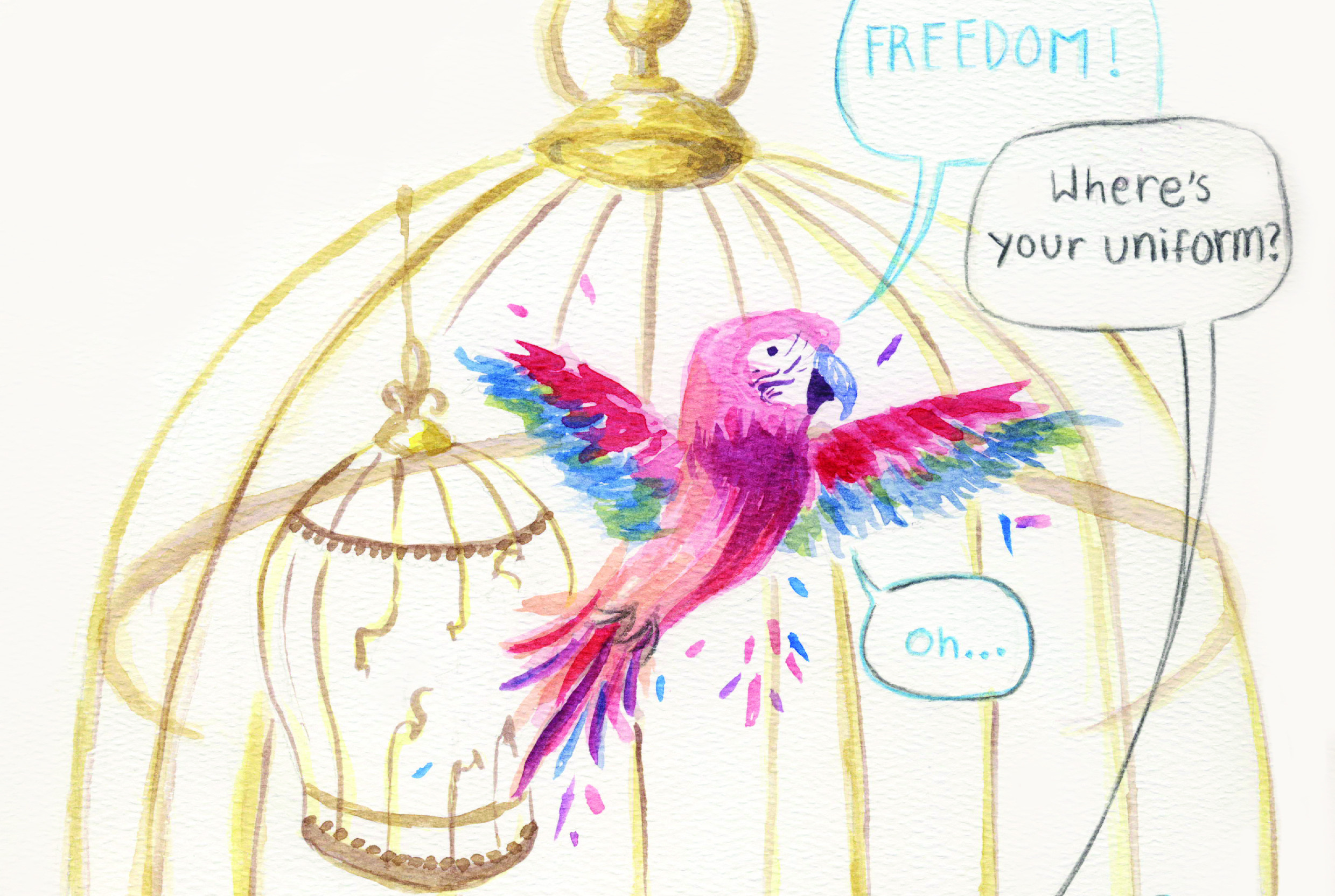From the rainbow-touting Gender and Sexuality Alliance signs to the “it’s not okay to say that’s so gay” posters of yesteryear, Roosevelt’s queer community has a noticeable presence. But the group that comes to mind when one says “queer community” is a particular kind of person, and that mental association is a breed of heterosexism equally as damaging as blatant homophobia. Even worse than that is the “gay-is-ok-until-you’re-identifiably-queer” ideology the school perpetuates.
There’s an idea that permeates the air of Roosevelt that we’re all equals. The cries of “same love!” are appreciated, no doubt, but the confines of Roosevelt’s queer community are very limited. Should a queer person choose to brave the experience of coming out, they’ll surely be met with outward support, but an inward sense of discomfort. Those around them will smile at the initial, “I’m gay,” but making any comment further than that is taking the risk to tread treacherous waters. Then, if they go beyond the initial declaration of coming out, they’re painted as being the gay kid that won’t shut up about it, and the social implications of that label are even worse than those of being openly queer at Roosevelt.
Once a student makes the choice to come out, the options narrow, forcing queer students to stay invisible or conform to stereotypes that define the RHS queer population. Much like any other clique of the infamously-segregated Roosevelt student body, the queer students of Roosevelt are perceived to have defining features. So what are these stereotypes? Loud, radically proud, and out; brightly colored hair; physically affectionate with one another; such tight jeans. By limiting queer folks to these categories, we force them to follow one of three paths: conform to those standards in order to be out, stay in the closet to remain themselves, or brave the path of being out and presenting as they are.
If students act on being out, they’re confronted with treatment as though being themselves is an attack on the comfort of heterosexual peers. This comes from a fundamental misunderstanding of the way heterosexuality is marketed in society. Since heterosexuality is deemed as the norm or the default, many don’t notice the wide variety of ways it’s advertised. Be it via marketing and the “sex sells” rhetoric, or the frequent high school gossip of who’s got a thing with who, heterosexuality is everywhere and to a queer person, it can feel claustrophobic at times. The second that rhetoric is rewritten to feature a queer couple however, it’s shamed for being shoved in others’ faces, and painted like a gay attack on “the norm”.
Note that I’ve used the terms “gay” and “queer” almost interchangeably throughout this article. That’s because most students at Roosevelt would say that they’re the same thing. We must remember that for many queer people, and many students at Roosevelt, they’re not the same. Not even a little bit. Queer is a blanket term which can denote bisexual, asexual, pansexual, and more people. By pretending it only applies to gay/homosexual people, we perpetuate something called “erasure”, in which the existence of a group of people is so under recognized that it becomes invisible, or erased. There are nearly 200 queer students at Roosevelt; recognize them, whether they conform to your idea of queer or not.
Maybe if we considered that one “norm” is very different from the next, then we would be able to start to break away from this idea that queer folks at Roosevelt have to be gay or else they’re “too queer” to fit in; that being queer is OK until you talk about it more than once; even that you have to look and act a certain way to be “acceptably queer”. Allow people’s identities to define them, not your behavior towards them.
Featured Picture: Sexuality doesn’t need to define your identity, according to Williams. Picture by Nadia Kao
